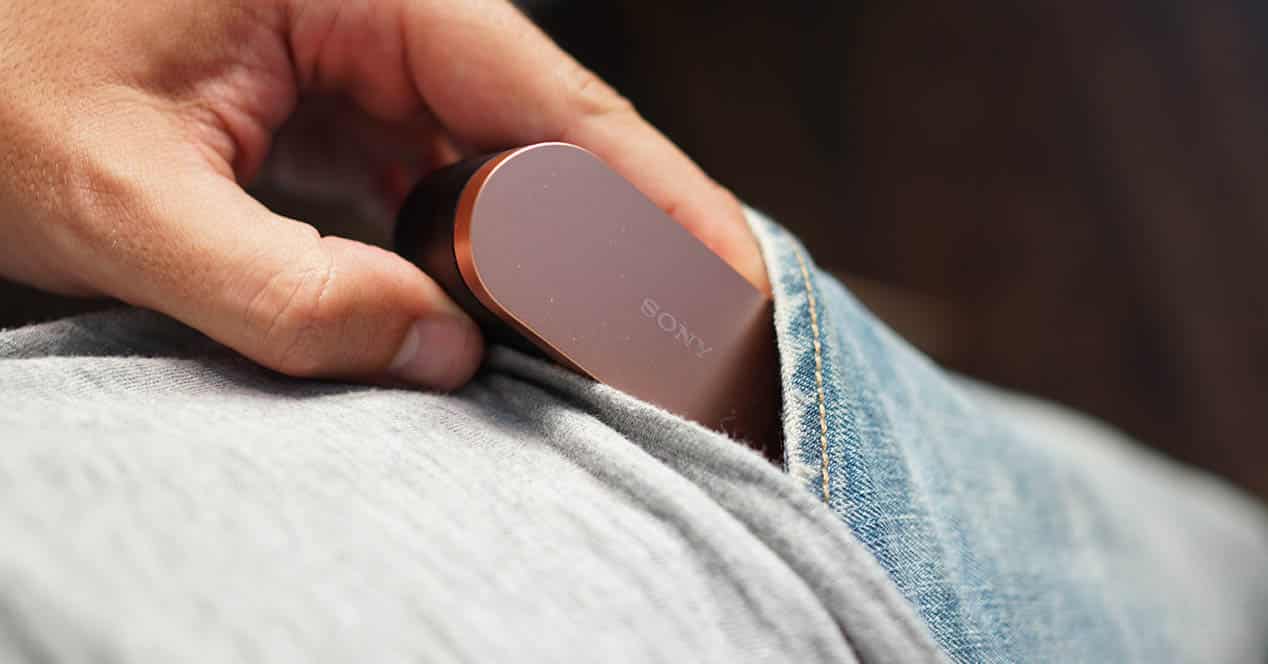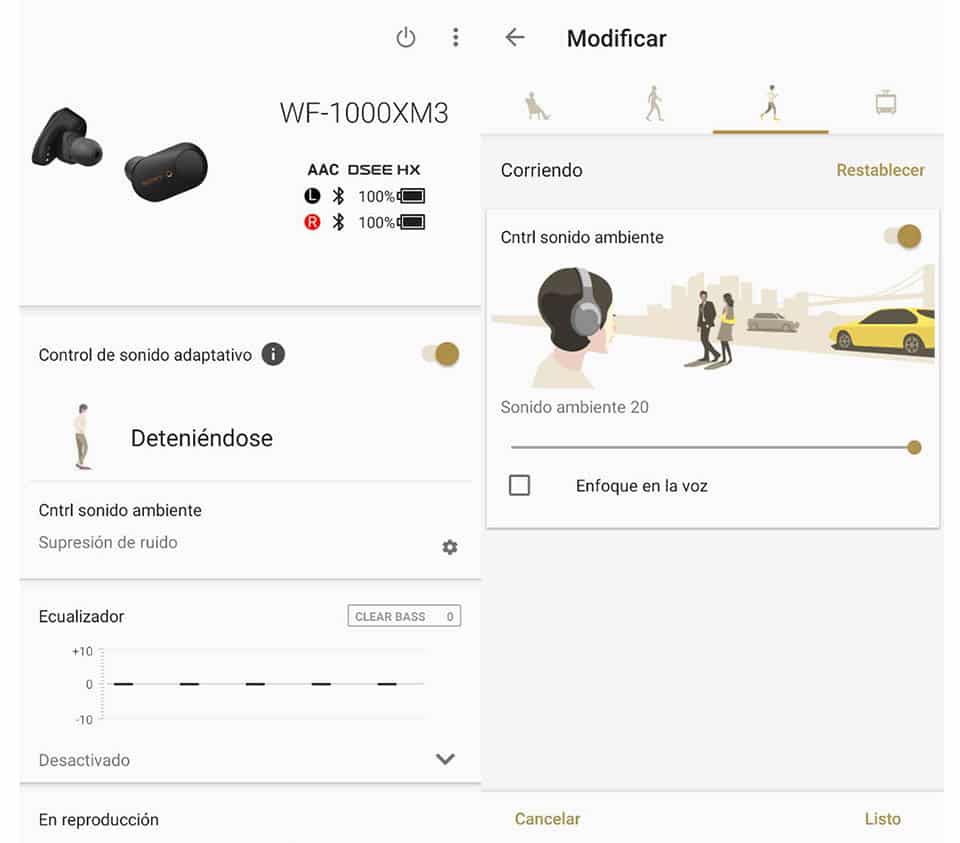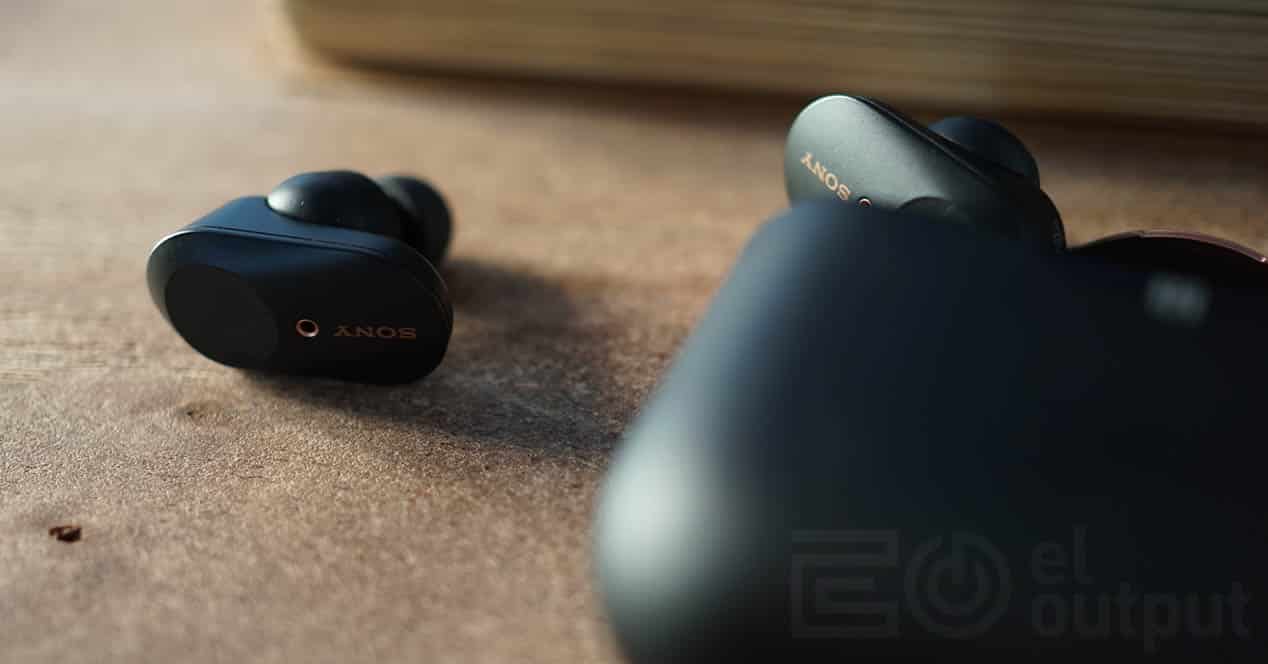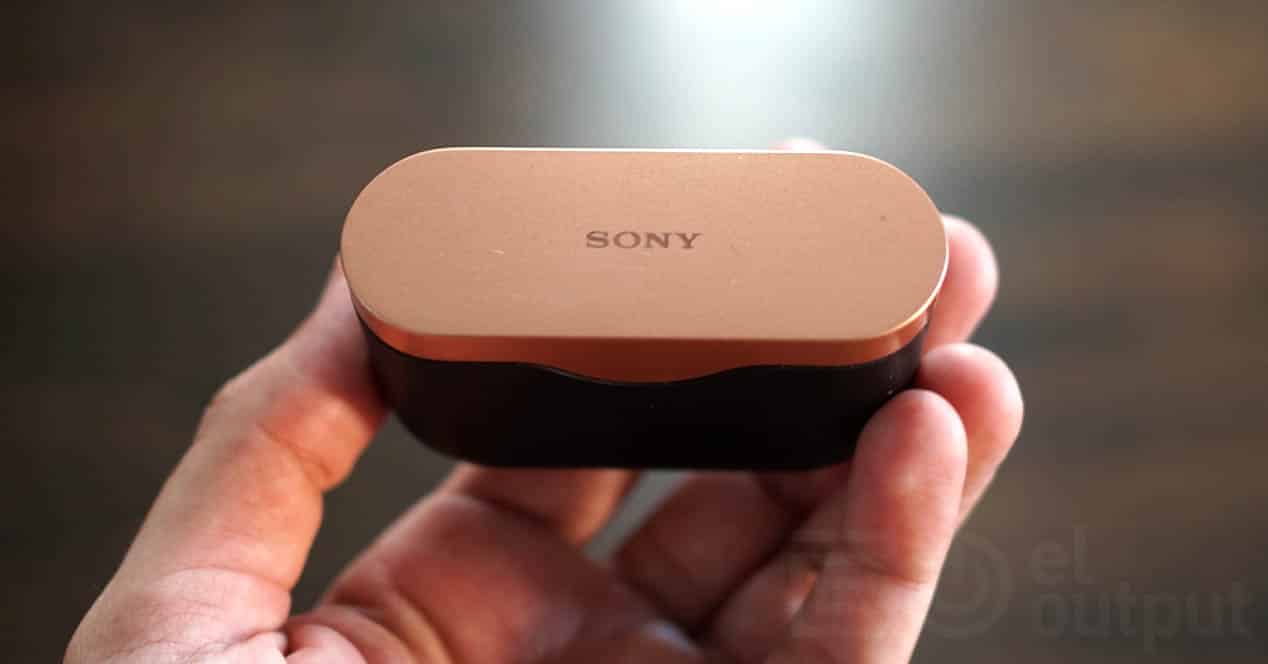
Given that Sony is one of the great protagonists in wireless audio, it was to be expected that the brand would launch a model with which to cope with the so fashionable AirPods. The answer is these WF-1000X M3, completely wireless earphones that sound and perform amazingly well, and are especially impressive for allowing you to disconnect from the world. As it is.
WF-1000X M3, pocket sound

The first thing we have to say is that they are not the first wireless headphones True Wireless (small cordless, standalone, and completely wireless models) from Sony. As its name indicates, we are facing the third generation, however, this third attempt is the one that particularly caught our attention. Because? Well, because of its noise cancellation system.
At an aesthetic level we find a pretty big case. To give you an idea, it is twice as big as the AirPods box, although the good news is that it includes a battery that allows the headphones to be recharged up to three times. The internal battery of the headphones will give us 6 hours music, so with the three extra charges from the storage box, we'll cover 24 hours a day. Not too bad. Another interesting point is that it has two magnets that are responsible for catching the headphones. This allows the contact pins for the charge to always be in place, so we only have to drop the headset and the magnet does the rest. This way we make sure that they will always be charging.
The headphones are small in the hand, but they are the largest in their category. we just have to compare them with others on the market like AirPods or Galaxy Buds to see that we are dealing with larger than normal models. The reason is the technology that it hides inside, which requires vital space to place it, and it is that inside it hides:
- Un QN1e processor: It is an HD noise cancellation processor that is responsible for analyzing ambient sound and canceling noise present at all frequencies. In addition, it consumes quite little energy, so it does not affect the general autonomy of the headphones.
- Two microphones: The headphones have two microphones in charge of working together. One of those is feed-forward, while the other is feedback. Together they are capable of capturing ambient sounds regardless of the predominant noise in the environment (inside an airplane, in the middle of the street or in an office), in order to offer us a clean reproduction without distractions.
As you may be imagining, this size directly affects ergonomics, since the center of gravity moves to the outermost side, which would cause the headset to fall out when we put it on or make a sudden movement. To avoid that Sony has found a solution in the form of boss, a slight belly that rests in the cavity of the ear and that allows the headset to be grasped at all times. In practice it works, and its placement feels comfortable, but it does not leave us completely calm when it comes to accelerating our pace when we go down the street. It may be a matter of getting used to it, but it is true that other solutions feel more secure.
We should also point out that the rubber provided as standard fit our ear well, however, we found it uncomfortable and painful over time. The solution was to replace it with another much more padded and softer model that is included in the box (Sony ships its headphones with a total of 7 pads of different sizes), something that made the problems disappear immediately.

Earlier versions and even competitive options include a small rubber wingtip that fits snugly in the ear and keeps the headset gripped at all times. This is not the case with these WF-1000X M3, and possibly this decision is due to the fact that these headphones are not intended for use in sports activities, since they do not have any type of certification that protects them from sweat and splashes.

To finish with the external section, we must mention that the headphones have a touch zone from which we can activate some predetermined functions. There are 3 functions to choose from, although we will only have two touch zones, one on each earphone. We will be able to control playback, choose noise cancellation modes or activate the Google assistant. If we take into account that the noise cancellation modes can be adjusted automatically thanks to the system's own recognition, the most practical option seemed to us to place the Google assistant in one headset and the playback control in another.
Noise cancellation

Following the triumphs achieved by the headband model (WH-1000X M3), Sony seeks with these new models the first place in the True Wireless range. The noise cancellation technology included in these headphones is very similar to that of its older brothers, however, as we are going to explain, it is not exactly the same.
Basically we find physical limitations. The headband model is responsible for completely covering the ear, creating protection against the outside. This helps to better isolate and project sound onto the pinna, so the balance between sound quality and noise cancellation is excellent.

Taking these details into account, the results of the new WF-1000XM3 are very good, and without a doubt better than any other model on the market. Although it will be essential choose the pad to use well, since using a smaller or larger one than what corresponds to us would not correctly isolate the external sound from our ear, and this is crucial to obtain a perfect functioning.
The secret to noise cancellation is in the internal chips that is in charge of filtering the noise and calibrating the audio so that it reaches us clean if we wish. So we can listen only to the voices that we have around us, listen to the environment, or simply isolate ourselves from the world completely. The application available for mobile phones allows us to manually adjust to our liking the amount of noise we want to enter through the headphones, being able to listen to people who are next to us, or simply keep ourselves in absolute silence (which, as we will see later, will not be so deaf as we thought).
But the cancellation can also be adjusted automatically by activating the "Adaptive Sound Control", a mode that will detect our actions and adjust the noise cancellation according to our state (stopped, walking, running or in a means of transport).
How do they sound?

In our tests we have been able to verify that the headband model filters and cleans voices better, obtaining clearer and more recognizable results. On the newer in-ear models, we were getting a bit more external noise. Of course, compared to other headphones in the same range, the Sony models come out triumphant due to their abilities, since they are the best to be calm without hearing practically nothing from the outside. The equalization that increases the bass has caught our attention, since we have obtained deep and intense sounds, giving the impression that we were using large headphones.
In short, the sound obtained is magnificent, and the noise cancellation is surprising for the size they offer. The headband models, however, are capable of canceling noise without the need to play music or any type of content, while these little ones need some type of reproduction so that we hear absolutely nothing from the outside. That is where the main difference between the two lies when it comes to canceling noise.
Google Assistant

As we have already mentioned before, the Google assistant is present in these headphones, and it is excellent news. It is because it allows you to offer the touch of artificial intelligence that is so much in demand in the market lately, and it is also because it is convenient to complete certain actions with the help of an assistant while keeping the phone in your pocket or bag.
The problem is in the Google assistant itself, which does not end up being a fluid and comfortable experience when we do not have a screen in front of us. That's not Sony's problem, so the manufacturer has done its job well. The only thing we ask is a little more efficiency and ease from the Google assistant, but that is something that we will have to request in Mountain View. One of the most practical advantages that we have found is that of being able to adjust the volume with the assistant, since surprisingly these headphones They don't have any kind of volume control. integrated, so we either use the volume button on our phone or call the assistant from the headphones.
The best true wireless headphones we've tested

Sony's headband models have become a reference in the market. Its noise cancellation system is tremendously effective, and added to the excellent sound quality make it a well-rounded product. Have you managed to bring that to a smaller format? More or less.
It must be clear that they are very different products, so we cannot compare them with each other. Within their category, these WF-1000X M3 are the best True Wireless that we have tested to date, so the only thing you will have to face is their price of $250. They are expensive? Its price is somewhat higher than the rest, however, the sound experience that it offers us together with the noise cancellation functions seems to us to be enough reasons to pay every euro.

Continuing with the unfair comparison with its older brothers, the WH-1000X M3 (the headbands) also have a fairly high price over the rest of the options, but that does not prevent it from being one of the best headphones that can be found on the market. and that the public has known how to value them. That is exactly what happens to us with these true Wireless models, so we cannot do more than recommend your purchase if you want to continue enjoying the quality and the main hallmark of Sony.